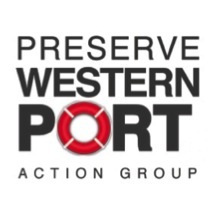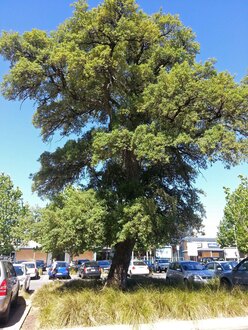-
Stop Adani destroying our land and our cultureWe are gravely concerned about the push by Adani and the Queensland Government to open up the Carmichael Mine on our traditional lands. Our traditional lands are an interconnected and living whole; a vital cultural landscape. It is central to us as a People, and to the maintenance of our identity, laws and consequent rights. If the Carmichael mine were to proceed it would tear the heart out of the land. The scale of this mine means it would have devastating impacts on our native title, ancestral lands and waters, our totemic plants and animals, and our environmental and cultural heritage. It would pollute and drain billions of litres of groundwater, and obliterate important springs systems. It would potentially wipe out threatened and endangered species. It would literally leave a huge black hole, monumental in proportions, where there were once our homelands. These effects are irreversible. Our land will be “disappeared”. Nor would the direct impacts be limited to our lands – they would have cascading effects on the neighbouring lands and waters of other Traditional Owners and other landholders in the region. And the mine would cause damage to climate, unleashing a mass of carbon into the atmosphere and propelling dangerous global warming. We could not in all conscience consent to such wholesale destruction. Nor could we allow such a project to contribute to the dire unfolding effects of climate change that pose such great risks to all peoples. We know that many other people who care deeply about conserving natural places, vital water resources, the great fauna and flora of central Queensland, and a health planet share our concerns about this mine. When we say No, we mean No. https://youtu.be/ZB2JC6yKy_E135,335 of 200,000 SignaturesCreated by Adrian Burragubba
-
Remove the Solar DC Isolator from the Roof!In mid-2012, Australia and New Zealand together issued a new standard for the installation of solar arrays. This standard mandated the use of a specific piece of equipment called the "rooftop DC isolator" in Australia, and by some interpretations also in New Zealand. They did this despite evidence showing that the practice is unsafe. A study from an international testing laboratory found that DC isolators are not safe in a firefighting situation, as they can’t withstand the high-pressure water used to extinguish a fire. The California State Office of the Fire Marshall frowns upon their use, because they give a false sense of security. And Europe, the most mature solar market, opted never to adopt them, also for safety reasons. More than 70 fires in Australia have been caused by this isolator since 2012 -- that is, since it became mandatory! To put this into perspective, there were only 3 fires related to PV systems in Australia prior to the mandatory requirement to install a rooftop DC isolator. The Australian government has responded with product recalls on DC isolators, at least 5 so far, showing this crisis isn’t just limited to a single manufacturer, but to the device itself. There is no evidence to suggest the device improves the safety of a PV system: all it does is increase costs and the risk to homeowners trying to do the right thing. And that's not to mention the catch-22 for PV installers who are both legally bound to comply and obliged to keep their clients safe. Master Electricians Australia chief executive Malcolm Richards in an interview with the ABC late last year said that he says he knows of about 40 to 50 fires that have been started by the faulty isolators. "We're warning home owners to carefully check the brand of isolator that is connected to your solar panels," he said. "If it carries one of these two (recalled) brands ... undertake the isolation procedure until your electrician can come around and fix that up to eliminate or replace it."1,624 of 2,000 SignaturesCreated by Lucas Sadler

-
Stop Mining in Our Water CatchmentOur Sydney water supply is currently under threat from coal mining that has been allowed under successive state governments in the southern coal fields beneath the Metropolitan water catchments' Special Areas. It is estimated that the Metropolitan catchment (Cataract, Cordeaux, Avon, Nepean and Woronora dam catchments) is losing 3 billion litres of water per year due to mining. If anyone enters these areas without permission they are liable to a $40,000 fine. Yet the Department of Planning has recommended the expansion of existing coal mines to undertake intensive longwall mining under the Cataract Dam catchment. The Metropolitan catchment contributes to 20% of Sydney's drinking water and is the sole supply of water for the Macarthur and Illawarra regions (over half a million people). Mining operations undermining the catchment of Woronora Dam have demonstrated how devastating this practice is with the sandstone creek bed of Waratah Rivulet irreversibly cracked and drained. The state government have also allowed exploratory Coal Seam Gas (CSG) wells in the Special Areas of the Warragamba and Metropolitan water catchments. There are also 95 producing CSG wells located in the Camden Gas Project with some within 200m of residences and on the flood plains of the Nepean River. The Nepean River is a source of agricultural water for the Hawkesbury/Nepean region and drinking water for North Richmond community. It is reckless to allow mining in these areas because of the risk of contamination of the surface water by fracking fluids or produced water from the coal seams. The current federal coalition government is offering incentives for state governments to sell and privatise assets. Sydney Water is a likely target as has been done in South Australia and Victoria. Experience shows privatisation leads to an increase in prices and reduction in maintenance. This is despite former Premier Barry O'Farrell's promise before the state election that a coalition government would not allow ("No ifs, No buts") mining in our water catchments. In an effort to draw these issues to the attention of the public and the candidates in the lead up to the state election on 28 March, 2015 a group of concerned citizens are embarking on a Walk for Water. This is a 160km walk from Cataract Dam to Hyde Park, Sydney between the 21-28 February. You can join us for part of the journey to show your concern for our most precious resource, water. Which is becoming even more precious in an ever expanding Sydney, in a climate that NASA and CSIRO acknowledge is trending hotter and experiencing longer, more severe drought events. You can find out more on Walk for Water at www.walk4water.net567 of 600 SignaturesCreated by Michael Streatfeild
-
Save Mimburi from being sold by the Queensland GovernmentMimburi models and teaches Indigenous cultural understandings. It is a land that builds partnerships between humans and the natural world through traditional art and cultural practices. Mimburi is an Aboriginal learning and healing place; a place whose flow reflects the confluence of the rivers, traditional Indigenous crafts and agricultural practices, and cross-cultural exchange.3,278 of 4,000 SignaturesCreated by Marc Bytheway

-
Save Our Broadwater - Stop ASF before it is too late!The Broadwater is a social, environmental and economic asset to our city which locals and tourists alike use and love, and we do not want its natural beauty and character destroyed by high density urban development or a ship terminal. The development proposed will entail millions of m3 of dredging which will destroy the habitat for dugongs, dolphins. migratory birds and over 450 species of marine life in the Gold Coast Seaway. Proposals to construct a huge development for 15,000 people mid Broadwater will create a visual abomination and severely impact upon traffic, infrastructure and population in adjacent suburbs like Southport, Labrador and Runaway Bay, leading to the M1. Finally, the community loves and uses its magnificent Broadwater and islands as its boating, swimming, sailing, fishing and recreational heart. This development will destroy this freedom and privilege, and change the beautiful face of our city forever. ASF can construct its development on private land it purchases like every other developer who invests in our city. We do not need to sell off precious public open space and waterways to attract investment. Further, the Broadwater as a shallow estuary of great environmental significance, is completely inappropriate for a ship terminal and consideration should be given both to extensive scientific research into offshore options and to optimising passenger shore visits from terminals constructed in Brisbane.12,212 of 15,000 SignaturesCreated by Save Our Broadwater Inc
-
Revoke the NSW Shark Meshing ProgramThe shark meshing program (SMP) is a lethal shark mitigation policy that has been in place since 1937 in NSW. It is managed by the Department of Primary Industries (DPI) fisheries NSW and contractors (fishers) carry out the program. The nets are set on 51 most popular beaches from Newcastle to Wollongong. The nets are 150m long and 6m high and are set in 10-12 metres of water. Sharks are able to swim over them and around them. The nets are random and indiscriminate killers of marine life and it is reported that 17,000 marine animals have been caught in shark nets in NSW although NSW Fisheries dept reports state that this figure is an underestimation of total numbers of animals caught due to poor historical data collection. The nets do not keep people safe from sharks. Shark / human interactions have occurred on beaches where shark nets are in place. The 2009 DPI fisheries review into the SMP stated that “the rate of shark attack has remained the same both before and after meshing commenced”. In contradiction to this the DPI fisheries NSW has claimed that “the SMP has been effective at providing a safer environment for swimmers”. However the NSW fisheries scientific committee (FSC) which is tasked with critiquing the program from a scientific standpoint has stated that “this statement is unsubstantiated because it is not based on a scientific comparison between meshed and unmeshed beaches, of shark numbers, interactions or attacks, the FSC requests that the SMP remove the statement" from the previous four annual reports of the SMP which it has failed to do. Fatal shark incidents are tragic events however with increasing medical technology and quick response first aid the vast majority of shark incidents are survivable – this was not the case back in the 1930’s when the NSW program was first put in place. We believe that the low numbers of shark bite fatalities on meshed beaches is more likely to be attributable to the presence of lifeguards who are able to detect sharks, close beaches and provide fast medical assistance in the event of a shark incident. Sharks are in their natural habitat and statistically the chances of being bitten by one are extremely low. Sharks kill on average 5 people worldwide per year, however people kill over 100 million sharks per year. Many of the animals caught in beach nets are now considered endangered as such the SMP is now listed as a key threatening process for the following marine animals: humpback, minke and southern right whales, Australian fur seals, dugongs and three species of endangered marine turtles, critically endangered grey nurse sharks and vulnerable great white sharks. Killing endangered animals in their ocean home for the purposes of increasing the safety to people who are visitors is unacceptable in this day and age. A federal Australian Government environment department report in 2005 titled ‘Death or injury to marine species following capture in beach meshing (nets) and drumlines used in shark control programs’ lists some 99 species of marine animal who have been victims of shark control programs, of these 99 species 73% are now listed on the IUCN red-list as near threatened, vulnerable, endangered or critically endangered or are classified as data deficient, or not assessed yet so we don't know if they too belong on the red-list. As animals and ecosystems face increasing environmental pressures, governments are obligated to ensure programs which threaten vulnerable and endangered species are replaced by less harmful measures to ensure human safety. noNSWsharkcull is campaigning for the removal of shark nets in NSW as these programs are outdated, and have not been demonstrated to make the ocean safer for people. We instead support public education in how to minimise chances of shark bite and scientific research into the tagging and tracking of sharks as alternative means to reduce the chances of shark bite incidents. We also support research into other non-lethal methods of shark mitigation. These methods will reduce the harm to our many endangered and vulnerable marine species including sharks, turtles, whales and dolphins who belong in the ocean and are fighting for their survival. We should be doing everything possible to protect marine ecosystems as they are more fragile than ever. We need shark control methods that make the ocean safer for people and marine animals including sharks. Sharks as apex predators are vital for the health of the ocean, without sharks scientists predict that the entire ocean ecosystem will collapse. The phytoplankton in the ocean provides up to 70% of the oxygen on the planet for this reason we need to keep our ocean ecosystems in balance. Healthy oceans need sharks and if the oceans die we die.3,317 of 4,000 SignaturesCreated by Sharnie Connell
-
Restore Lake PedderLake Pedder was the most beautiful and extraordinary lake in the world, with a beach that was 3km long and in summer grew to be up to 600m wide, and rugged mountains all around. The most extraordinary feature of the beach however was its amazing herring bone pattern, giving it the appearance of a gigantic golden comb. Were the lake to be restored, if appropriate tourist facilities were provided there would be the potential for a lot of money flowing into the state, greatly benefiting Tasmania's economy, as Lake Pedder was one of the world's greatest natural wonders.44 of 100 SignaturesCreated by allan starr
-
Stop Toxic Waste being dumped at the Lyndhurst LandfillThis will ensure alternative treatments to landfill for higher hazard waste are appropriately researched, monitored and implemented. This will also ensure that there are no (detrimental) health impacts to the residents in the surrounding area of Lyndhurst.57 of 100 SignaturesCreated by VASILIOS TOURLOUPIS
-
Preserve Western Port - Stop the Development of Port of HastingsThe expansion to accommodate a projected 3000 ships per year will involve massive dredging, dumping of dredge spoil, land reclamation, risk of oil spills, air pollution, beach and cliff erosion associated with channel deepening, and loss of habitat. This has the potential to destroy the Western Port we know, love, and depend upon. Our beaches, fishing, wildlife, tourism economy, clean air, clean water. Western Port is a wetland of international significance, and Australia has obligations to look after it under the Ramsar treaty. Please take some time to learn about the proposed port expansion and its likely impacts. To stay up to date visit http://preservewesternport.org.au and http://www.wppcinc.org Thanks!796 of 800 SignaturesCreated by Joanna Johnson
-
Carbon Tax Repeal Laws to Lead to Job LossesThe carbon tax legislation has lead to the development of new business opportunities in green industries and sustainable business models. Repealing the carbon tax will lead to job losses in the new green economy. We need to demonstrate to the government and the community the impact that repealing the carbon tax will have on new green businesses. Green business is just as important to the economy as dirty business.23 of 100 SignaturesCreated by Daniel Wurm
-
Save the heritage Cork Tree in Norwood, Adelaide, South AustraliaThis tree was planted in 1892 by prominent industrialist Henry Buttery in his residential property adjacent to his furniture factory, which was the first in South Australia to use steam powered machinery, and the nearby row of Victorian shops from 158 to 166 The Parade, which still retain their distinctive parapets and facades and were also built by Henry Buttery. The tree and the shops represent the cultural history of late 19th Century Norwood. The cork tree (quercus suber) is significant with respect to its species, trunk size and its age. It is of exceptional form, with a good crown and contributes to the interpretation and understanding of the important history and built heritage of the site. It is registered by the National Trust of Australia (No. 34) on the Significant Tree Register.1,370 of 2,000 SignaturesCreated by Anne Chappel
-
Wonthaggi Cemetery Save and PreserveWe want to be proud of the Wonthaggi Public Cemetery's historic grounds and the very special areas in which to honour and celebrate life. We need the grounds to be kept in pristine condition all year round for safe access to and from grave sites for all population groups including senior citizens and members of the public with a disability - even people with an injury or temporary disability.19 of 100 SignaturesCreated by Les Larke

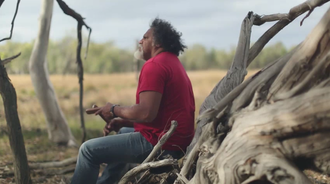

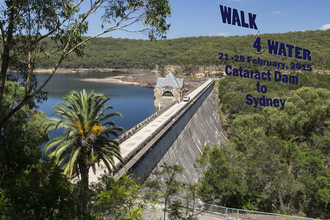
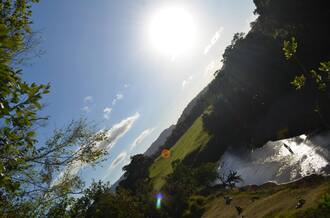

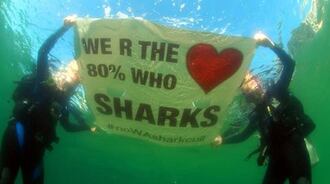
_-_Copy.jpg)

